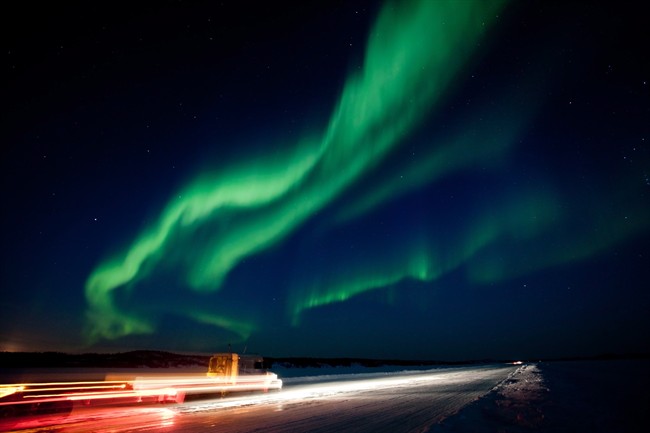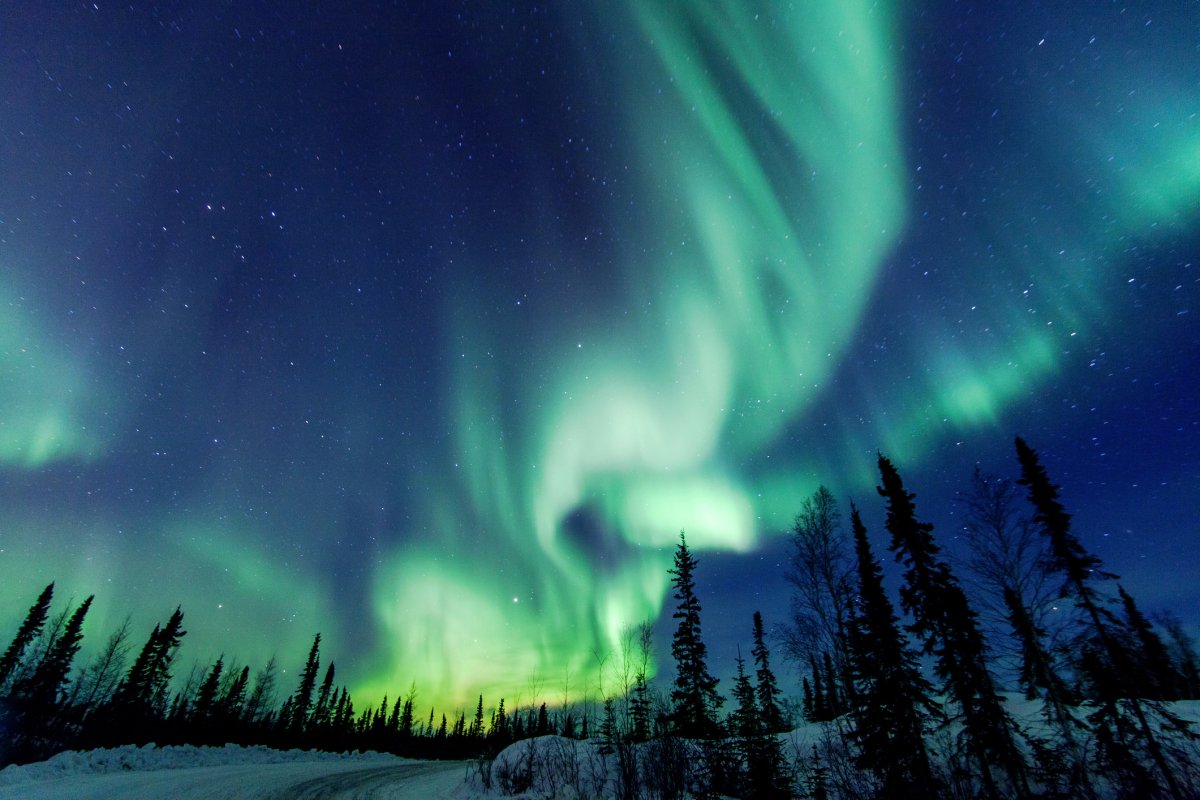Canadians interested in a visible display of the northern lights due to a solar storm may be out of luck on Wednesday, but experts say the weekend forecast is looking brighter.

On Monday, the United States National Oceanic and Atmospheric Administration (NOAA) issued a space-storm watch, leading to predictions that the aurora borealis (northern lights) would be visible in the skies above southern Canada and the northern U.S.
READ MORE: Albertans tweet amazing photos of northern lights
The watch predicted that a “G1” geomagnetic storm would hit Earth on March 14 and 15. This type of storm is produced by the effects of our sun’s solar winds, and it’s pretty common. More than 100 hit the Earth annually.
The sun discharges a constant stream of charged particles that flows outward and can vary in speed. A few days ago, a relatively large area of reduced density appeared in the sun’s atmosphere – known as the corona – and more particles began streaming quickly toward us.
This “coronal hole” is visible as a darker area in the image below.
- Trudeau tight-lipped on potential U.S. TikTok ban as key bill passes
- Canadian man dies during Texas Ironman event. His widow wants answers as to why
- Hundreds mourn 16-year-old Halifax homicide victim: ‘The youth are feeling it’
- On the ‘frontline’: Toronto-area residents hiring security firms to fight auto theft
When the resulting gust of charged particles reaches us, they’ll interact with the Earth’s own atmosphere and produce the aurora. But the interaction can also cause disruptions to electrical grids and satellites.
A G1 storm is the lowest on the scale, however, which ranges from G1 to G5. The effects of this particular storm are expected to be mild, according to the NOAA, with some minor power grid fluctuations and disruptions to satellite operations. Most people on the ground won’t even notice, and there’s certainly no need for panic.
The northern lights, meanwhile, may indeed be visible on Wednesday night at high latitudes, in parts of Western Canada, and more sporadically down into the northern U.S.
The NOAA is predicting the lights could be seen down as far as the green line in the image below.

But meteorologist Scott Sutherland at The Weather Network wrote on Tuesday that it’s the weekend that skywatchers should really get excited about.
As the leading edge of the faster solar winds runs up against the slower winds ahead of them, they “pile up,” he explained, creating a denser “ribbon” of particles that, when it hits our atmosphere, can cause a noticeable ramping up of aurora activity in the skies.

When that leading edge passes, the faster winds really sweep over us. This transition is expected over the weekend. Saturday also happens to be the New Moon, meaning the skies will be dark enough to really accentuate the lights.
Adding to all of this is the fact that we are approaching the Spring Equinox next Tuesday, and researchers have observed that bright displays of the northern lights are more likely around this time of year.
READ MORE: Banff Sunshine Village shares dazzling time-lapse of the northern lights
Anyone interested in taking in the potential spectacle should turn their eyes toward the northern horizon, and it’s best to head out of town, according to the Canadian Space Agency.
“Dress warmly and choose a location with dark skies,” the CSA advises. “Light pollution from bright city lights makes it difficult to see the aurora.”





Comments